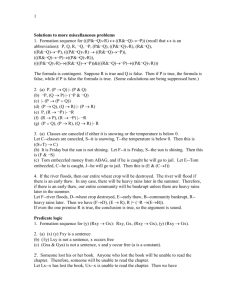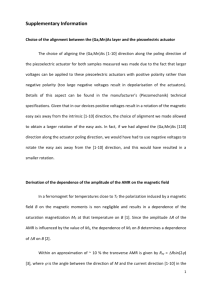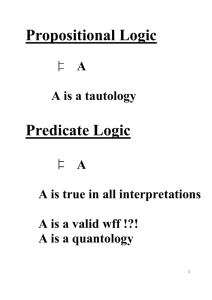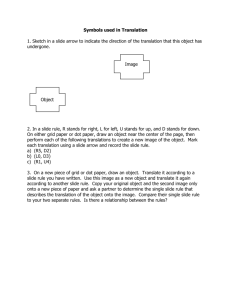Relations
advertisement
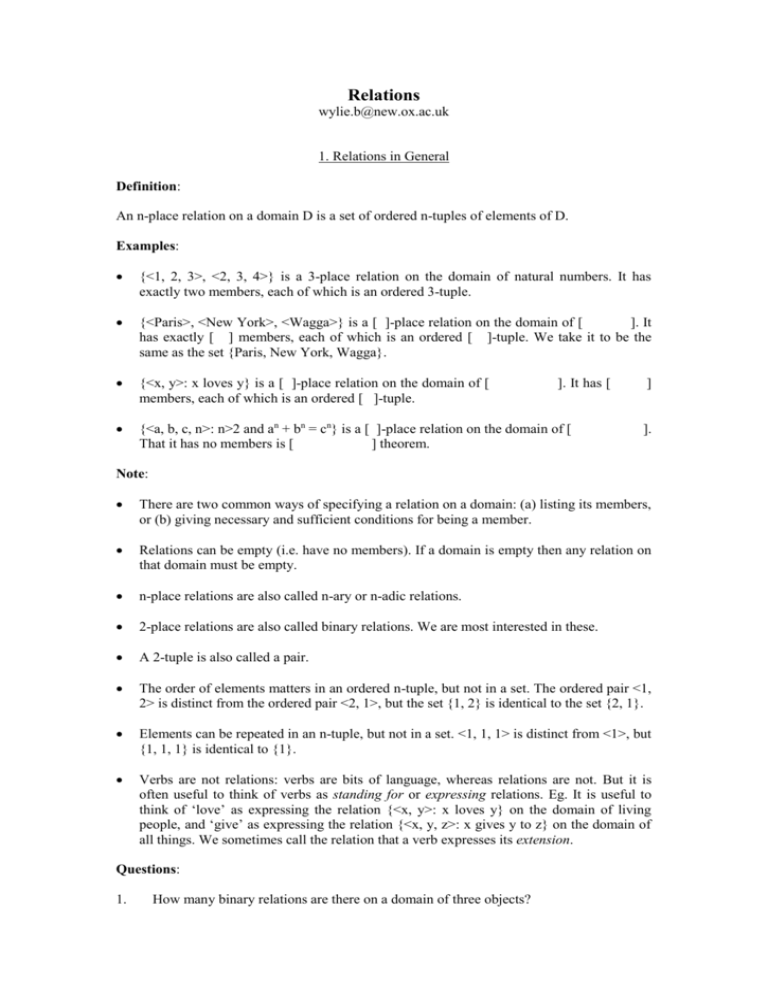
Relations
wylie.b@new.ox.ac.uk
1. Relations in General
Definition:
An n-place relation on a domain D is a set of ordered n-tuples of elements of D.
Examples:
{<1, 2, 3>, <2, 3, 4>} is a 3-place relation on the domain of natural numbers. It has
exactly two members, each of which is an ordered 3-tuple.
{<Paris>, <New York>, <Wagga>} is a [ ]-place relation on the domain of [
]. It
has exactly [ ] members, each of which is an ordered [ ]-tuple. We take it to be the
same as the set {Paris, New York, Wagga}.
{<x, y>: x loves y} is a [ ]-place relation on the domain of [
members, each of which is an ordered [ ]-tuple.
{<a, b, c, n>: n>2 and an + bn = cn} is a [ ]-place relation on the domain of [
That it has no members is [
] theorem.
]. It has [
]
].
Note:
There are two common ways of specifying a relation on a domain: (a) listing its members,
or (b) giving necessary and sufficient conditions for being a member.
Relations can be empty (i.e. have no members). If a domain is empty then any relation on
that domain must be empty.
n-place relations are also called n-ary or n-adic relations.
2-place relations are also called binary relations. We are most interested in these.
A 2-tuple is also called a pair.
The order of elements matters in an ordered n-tuple, but not in a set. The ordered pair <1,
2> is distinct from the ordered pair <2, 1>, but the set {1, 2} is identical to the set {2, 1}.
Elements can be repeated in an n-tuple, but not in a set. <1, 1, 1> is distinct from <1>, but
{1, 1, 1} is identical to {1}.
Verbs are not relations: verbs are bits of language, whereas relations are not. But it is
often useful to think of verbs as standing for or expressing relations. Eg. It is useful to
think of ‘love’ as expressing the relation {<x, y>: x loves y} on the domain of living
people, and ‘give’ as expressing the relation {<x, y, z>: x gives y to z} on the domain of
all things. We sometimes call the relation that a verb expresses its extension.
Questions:
1.
How many binary relations are there on a domain of three objects?
2.
How many empty relations are there?
2. Translating into the language of predicate calculus
We can translate ‘Briony loves Jagjeet’ into predicate calculus as the formula ‘Lab’, if we
interpret ‘a’ as standing for Briony, ‘b’ as standing for Jagjeet, and ‘L’ as standing for the
relation {<x, y>: x loves y} on the domain of people (or students at Oxford, or ...). Such a
translation preserves truth conditions: ‘Briony loves Jagjeet’ is true iff ‘Lab’ is true.
Questions:
Translate the following into predicate calculus suitably interpreted:
1.
Everyone loves Jagjeet.
2.
The 3-place relation R is not empty on the domain of people.
3.
The binary relations R and S are identical on the domain of dogs.
3. Graphing Binary Relations
The good thing about binary relations is that we can graph them: if <a, b> is an element of the
relation then draw a dot for a and call it ‘a’, a dot for b and call it ‘b’, and an arrow from dot a
to dot b.
Example:
Graph the relation {<1, 1>, <1, 2>, <2, 3>, <2, 2>, <3, 2>, <1, 3>} on the domain {1, 2, 3, 4}.
Terminology:
There is a loop on dot a if there is an arrow from a to a.
There is a single arrow from dot a to dot b if there is an arrow from a to b but no arrow
from b to a.
There is a double arrow between dots a and b if there is an arrow from a to b, and an
arrow from b to a.
There is a broken journey from dot a to dot c if there is a dot b such that there is an arrow
from a to b, and an arrow from b to c.
There is a broken journey with a short cut from dot a to dot c if there is a broken journey
from a to c, and an arrow from a to c.
There is a broken journey without a short cut from dot a to dot c if there is a broken
journey from a to c, but no arrow from a to c.
Note: dots a, b, and c in these definitions do not have to be distinct. So:
There is one type of loop.
There are two types of double arrow.
There are five types of broken journey, three of which automatically have shortcuts.
4. Classifying Binary Relations
Suppose that R is a binary relation on the domain D.
Reflexivity:
R is reflexive iff:
i.e. Every dot has a loop
xRxx
i.e. There are no dots without a loop
xRxx
R is irreflexive iff:
i.e.
xRxx
i.e.
xRxx
R is non-reflexive iff it is neither:
[xRxx xRxx]
i.e.
Symmetry:
R is symmetric iff:
xy[Rxy Ryx]
xy[Rxy Ryx]
i.e. Every arrow is a double arrow
i.e. There are no single arrows
R is asymmetric iff:
xy[Rxy Ryx]
xy[Rxy Ryx]
i.e.
i.e.
R is non-symmetric iff it is neither:
[xy[Rxy Ryx] xy[Rxy Ryx]]
i.e.
Transitivity:
R is transitive iff:
xyz[[Rxy Ryz] Rxz]]
xyz[[Rxy Ryz] Rxz]
R is intransitive iff:
xyz[[Rxy Ryz] Rxz]]
xyz[[Rxy Ryz] Rxz]
i.e. Every broken journey has a shortcut
i.e. There are no broken journeys without a
shortcut
i.e.
i.e.
R is non-transitive iff it is neither:
[xyz[[Rxy Ryz] Rxz] xyz[[Rxy Ryz] Rxz]]
i.e.
Connectedness:
R is connected iff:
xy[x = y [Rxy Ryx]]
xy[x = y [Rxy Ryx]]
R is not connected iff:
xy[x = y [Rxy Ryx]]
i.e. Every pair of distinct dots have an arrow
between them
i.e. There are no distinct dots without an arrow
between them
i.e.
Other:
R is an equivalence relation iff it is reflexive, symmetric and transitive.
Questions:
1.
Classify the following relations:
(a)
{<x, y>: x is a sister of y} on the domain of living people.
(b)
{<x, y>: y = x + 2} on the domain of natural numbers.
(c)
{<x, y>: x supports the same football team as y} on the domain of living people.
2.
Is it possible to have a non-empty binary relation on a given domain which is both
transitive and intransitive?
4.
Give a relation on a specified domain that is:
5.
(a)
Irreflexive, non-symmetric, non-transitive, and not connected.
(b)
Reflexive, asymmetric, intransitive, and connected.
(a)
Use a tableau to show that a transitive relation is irreflexive only if it is
asymmetric.
(b)
Two binary relations R and S are said to be converse iff xy[Rxy Syx].
Show that if a relation is symmetric then so is its converse.


